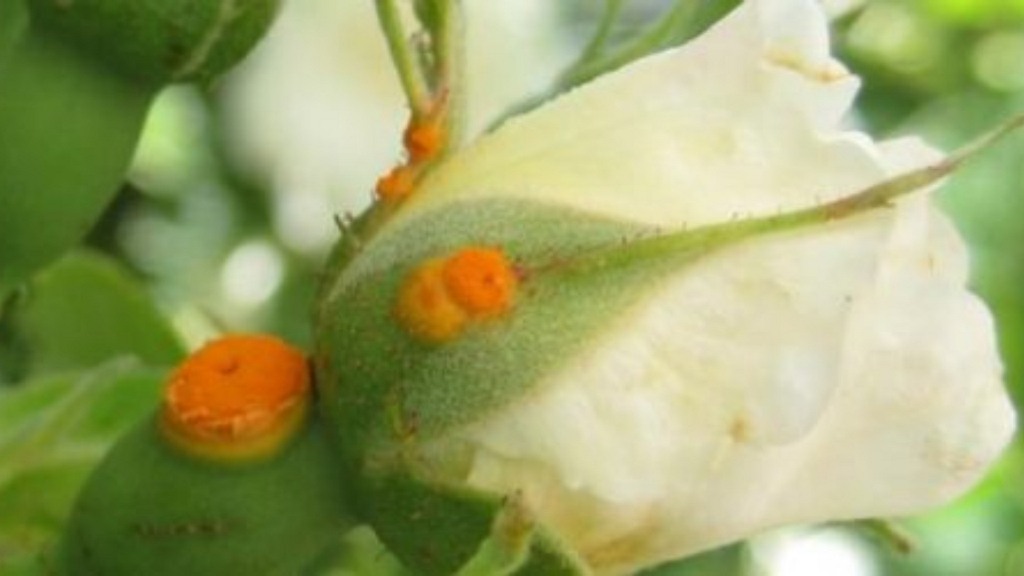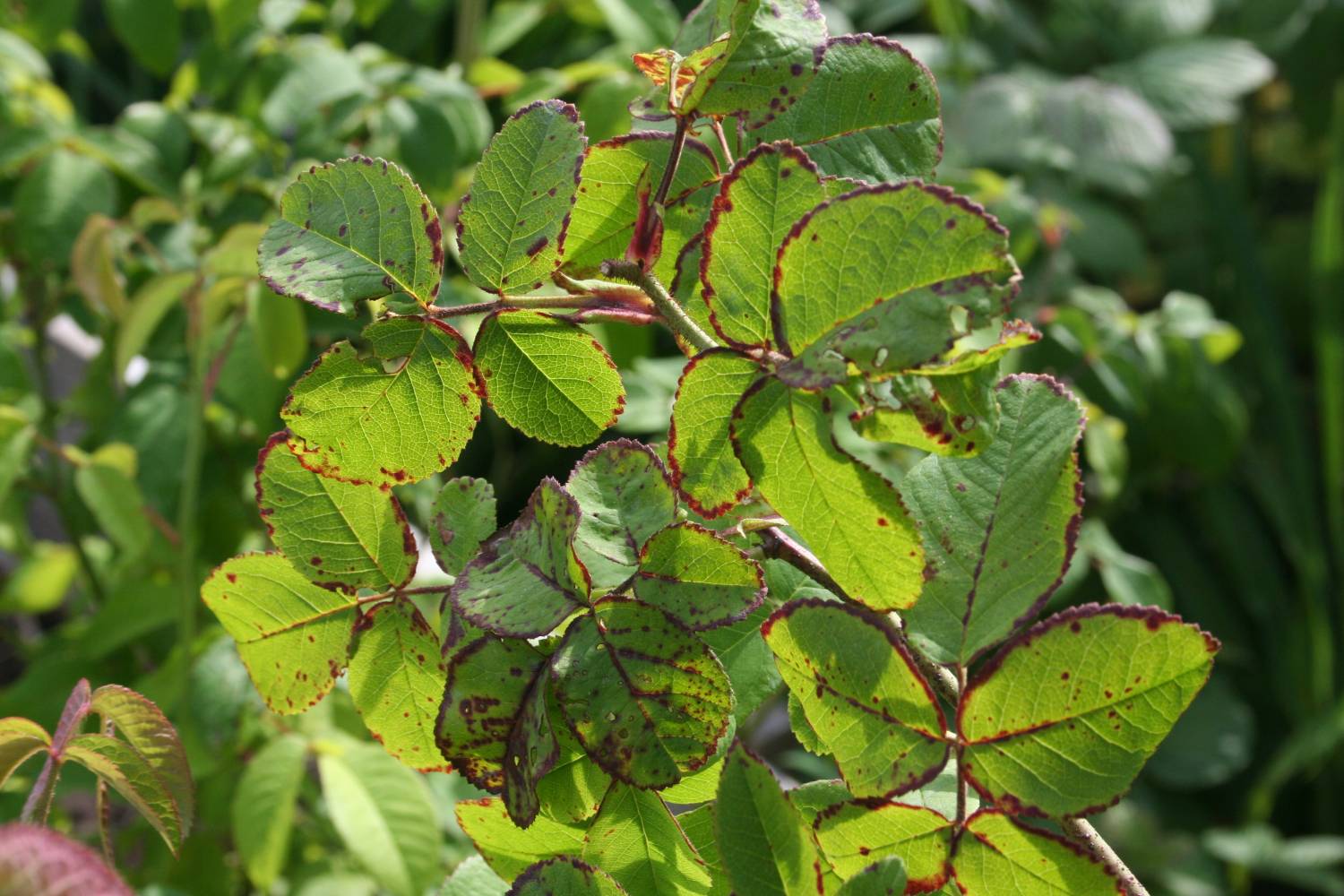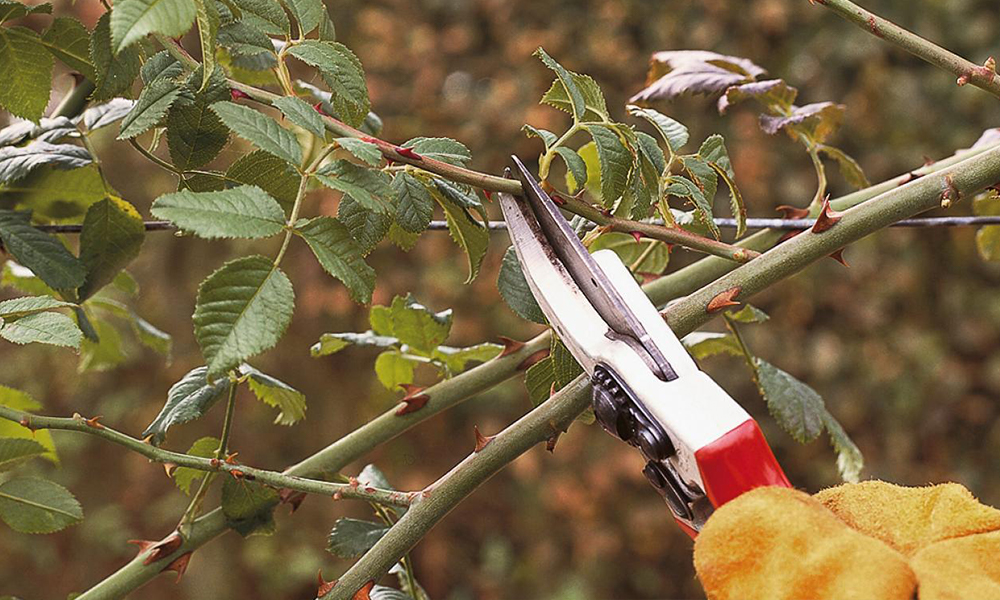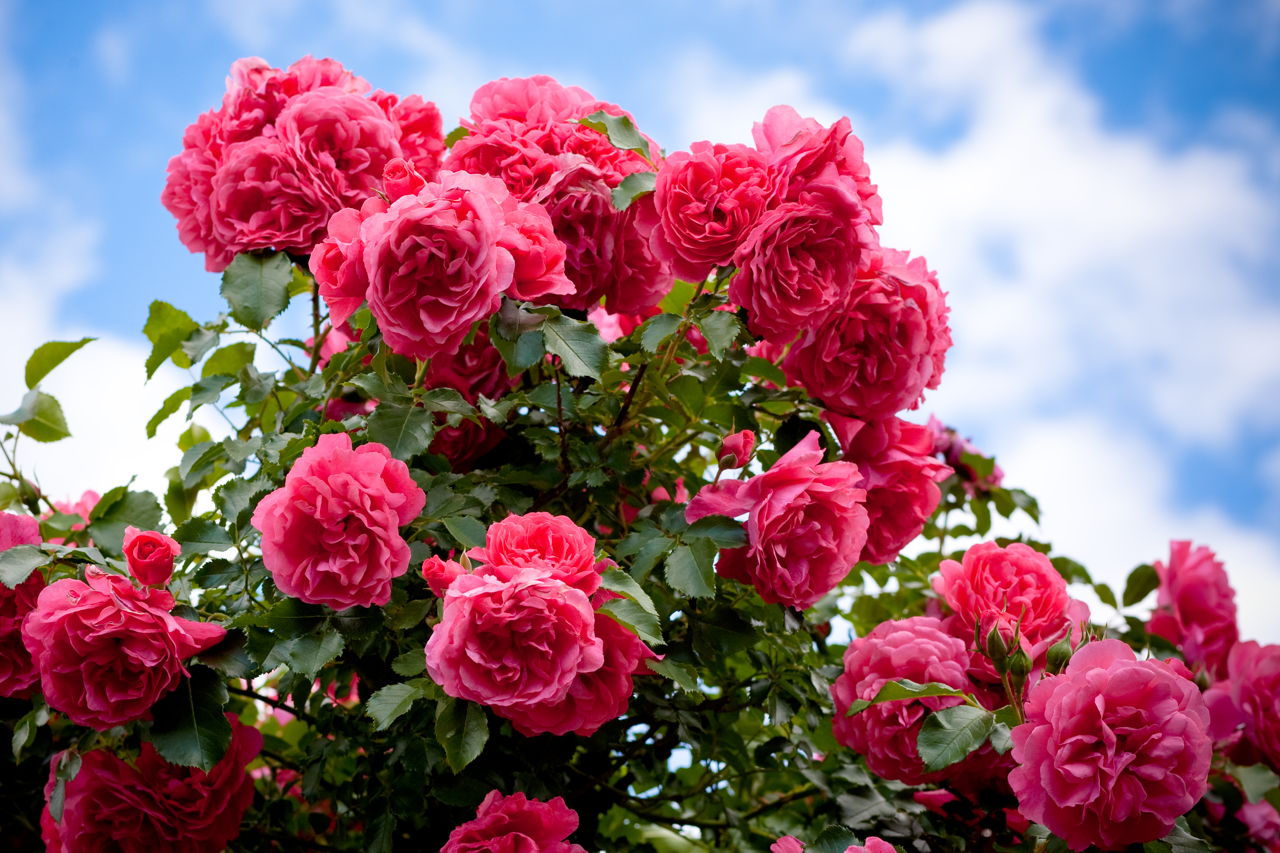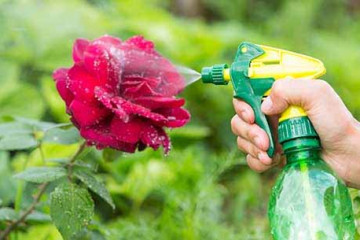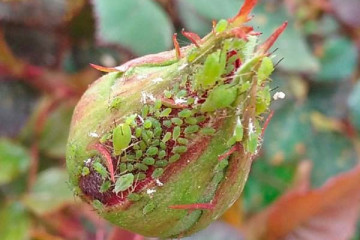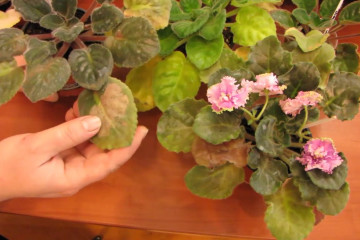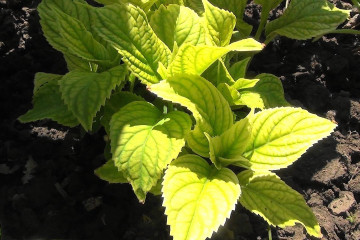Rust on roses - why it appears and how to treat it
Content:
Garden and indoor roses are susceptible to many fungal diseases. One of them is rust, which initially infects the leaves and subsequently switches to shoots, buds and even flowers. It is possible to cope with this dangerous ailment, but only with complex measures of struggle at the initial stage of development. Otherwise, the bush dies. Therefore, in order to prevent this, it is necessary to learn how to recognize a rusty rose and become familiar with the methods of its treatment.
What is rust on roses, why is it called that
Rust on roses is a dangerous disease caused by the fungus Phragmidium. Many gardeners mistakenly think that junipers and barberries are the source of the spread of this pathogen, which can be planted next to the rosearium. But, as practice shows, rust most often penetrates the garden with infected seedlings or moves from neglected plantings of rose hips, which are located nearby.
The causative agent of the disease hibernates in fallen leaves, microcracks on the shoots and even under the scales of dormant buds. Therefore, it will not be possible to solve the problem without cardinal treatment, since it easily tolerates frosts.
Why rust is dangerous
The danger of the disease is that it is one of the difficult to remove. Therefore, in order to eradicate the fungus from the garden, it is necessary to resort to comprehensive control measures. Otherwise, the disease will progress and eventually cover all adjacent bushes.
Rust inhibits the development of the entire plant and prevents full flowering, as it disrupts metabolic processes in tissues and interferes with photosynthesis. As a result, the affected areas do not receive nutrition and, as a result, wither, and the pathogen moves to new territories.
How and why does rust appear
A provoking factor in why the leaves of a rose rust are cool and rainy weather for a long time. An excess of nitrogen and a lack of potassium in the soil, as well as heavy clay soil, which restricts air access to the roots, can contribute to the defeat.
All these factors, combined with the thickening of rose plantings, lead to a weakening of the bushes. As a result, the plant's immunity is reduced, which makes it unprotected against the causative agent of the disease.
How to identify rust
Rusty spots can appear on the leaves of a rose in late spring or early summer. Initially, small dots of a bright yellow hue can be found on the back of the leaves.
More characteristic signs of damage appear after 2-3 weeks, when the mycelium of the fungus grows through the plate. During this period, you can already see reddish spots on the upper side of the leaf. And on the opposite side, in their place, convex spore-bearing pads of the same color grow. With the development of the disease, young rose leaves grow already deformed.
Subsequently, the fungus spreads to the shoots, which leads to their curvature and cracking. And then he switches to buds and flowers that wither without opening.With the arrival of autumn, the red spots turn brown.
Ways to treat rose rust
If rust appears on the leaves of a rose, how to treat the affected bushes? This question worries many florists who are faced with this problem. After all, only timely treatment can stop the development of the fungus and return a healthy look to the shrub. But you need to fight quickly to prevent rust from spreading to neighboring rose bushes.
What to do first
When the first signs appear, it is initially necessary to remove all affected leaves and cut off the shoots at the base. Everything collected must not be thrown into a common compost heap. These parts should only be burned to destroy potential sources of the fungus.
After that, remove the weeds at the base of the bush, and completely replace the topsoil, where numerous mycelium are usually found.
Then the first treatment with copper-containing preparations, such as Bordeaux mixture, should be carried out.
- With early spring progression of rust, a 1% solution of this fungicide must be used. In this case, you need to process bare shoots and the top layer of soil in the root circle.
- In the summer, the affected rose bush should be sprayed before and after flowering, using also a 1% solution.
- Finally, in the fall, the plant should be treated with 3% iron sulfate. It is necessary to spray the shoots and the adjacent soil, which will fix the result.
Only if all these conditions are met can a positive result be expected.
Treatment with folk remedies
Methods of dealing with rust on a rose-stock also imply the use of folk remedies. They help to cope with the fungus at the initial stage, and they can also be used as a prophylaxis.
Effective recipes:
- Grind the shoots and leaves of wormwood in the amount of 400 g. Pour the resulting mass into a bucket and fill it with water to the top. Insist the solution for 2 weeks. At the end of the waiting period, clean through a sieve. Use for spraying and watering, after diluting the concentrate with water in a 1: 2 ratio.
- Grate with 200 g of laundry soap. Pour the mixture with 5 liters of hot water, stir until completely dissolved. After cooling, apply for processing. Repeat the procedure every 3 days until the signs of the disease disappear completely.
- Finely chop 1.5 kg of milkweed shoots and leaves. Pour the resulting mass with 10 liters of water. Withstand the infusion for 24 hours in a warm place, covered with a lid. Treat the affected bushes twice with a frequency of 7 days.
- Fill a bucket with chopped shoots and nettle leaves. Pour water over the green mass so that the liquid completely covers it. Soak in a sunny place for 2 weeks, stirring occasionally. At the end of the fermentation process, strain the resulting product. Use it for spraying and watering bushes in a ratio of 1:10.
- Fill a container with 1 liter of hot water. Add 10 g of tea infusion to it and let cool. Then clean and pour in 50 g of vodka additionally, mix everything thoroughly. Spray the bushes twice with the resulting solution with a break of 5-7 days.
Fungicide treatment
How else to handle rust on roses? Professional remedies are more effective in combating this disease on roses. But their disadvantage is that they can be addictive to the fungus, which makes it impossible to effectively treat the plant. To avoid this, you should alternate funds.
Effective remedies:
- Falcon. A universal drug that can be used for treatment and prevention.To do this, dilute 10 ml in 10 liters of water and spray the bushes.
- Strobe. Highly effective fungicide. For processing, you need to dissolve 4 g of the product in a bucket of water. Carry out the treatment three times at intervals of 10 days, reducing the concentration by half each time.
- "Topaz". A systemic fungicide that penetrates into plant tissues, which allows you to stop the development of the fungus, both outside and inside. To prepare the working fluid, you need to dilute 2 ml of the drug in 5 liters of water. Spray roses 2-3 times with a break of 7 days.
- Hom. Copper-containing contact fungicide. It is effective only at the initial stage of rust development. To prepare the solution, you need to dissolve 40 g of powder in 10 liters of water. Carry out processing every 10 days.
Prevention of rust on roses
Rust requires long-term treatment and the use of various drugs. Sometimes it is even easier to dig up and burn a heavily affected bush than to continue processing.
Therefore, in order to avoid this scourge, it is recommended to adhere to simple prevention rules. This cannot completely eliminate the likelihood of injury, but it will minimize possible risks.
Preventive measures:
- do not allow thickening of the landings;
- apply the correct feeding, depending on the stage of development of the bushes;
- loosen the soil after moistening to maintain air access to the roots;
- treat roses three times during the season with systemic fungicides;
- apply intermediate folk remedies to increase sustainability;
- when buying new seedlings, carefully examine them and be sure to spray them with preparations;
- remove all damaged shoots in the fall and collect litter;
- inspect shrubs regularly.
In the fight against rust, you need to use all methods of fighting. Otherwise, the fungus will cause irreparable harm to the plant, which will lead to its death. Therefore, all rose lovers need to constantly inspect the bushes, and respond in a timely manner when warning signs appear.
